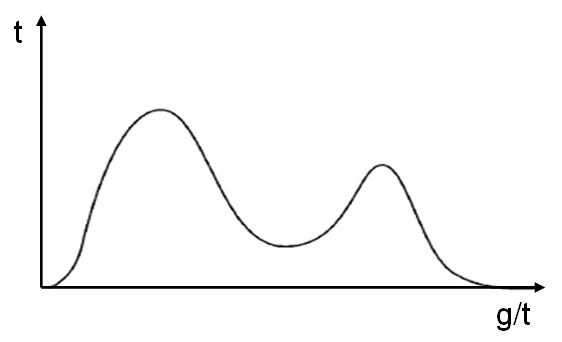Bimodal Distribution
A bimodal distribution is a distribution that has two separate and distinct peaks in it. A distribution of a data set describes the relative frequency of the occurrence of outcomes within each defined set of ranges.
The term “bimodal” comes from the prefix “bi” meaning two. “Modal” comes from the term “mode” which is the most frequently occurring number.
The shape of a graphed bimodal distribution can vary, but the most common is the double hump reminiscent of a dromedary camel.

Bimodal Distribution

The most common cause of a bimodal distribution is that there are really two distinct data sets within a population. Imagine you graphed the heights of students in a college lecture class with a large number of students. If the class was at an all-girls or all-boys school, the distribution would most likely be a normal distribution, the typical bell curve most people are familiar with.
But if the class was mixed gender, the graph might show two spikes. One would be near 5′ 4″ and the other near 5′ 9.5″. In reality, we are looking at the combined data sets of men and women, depicted as a single data set.
Note: If you took the average height of all classes and plotted all those averages on the same chart, it would look like a normal distribution. This comes from the central limit theorem.

Bimodal distributions are generally an indicator that you are looking at two things rather than one. When looking at the results data for, say a productivity study, a bimodal distribution could means that you have two different processes working.
Imagine you see a distribution of hourly productivity for a production area for a month and notice that there are two peaks. If you dig into the data, you would likely find that the results come from two different production lines, or two different shifts. If you further investigated, you would probably find that the different subsets are using two different processes.
The takeaway here is to use all the tools at your disposal. Graphically depicting data can make certain situations jump out at you in a way that rows of numbers cannot.


0 Comments